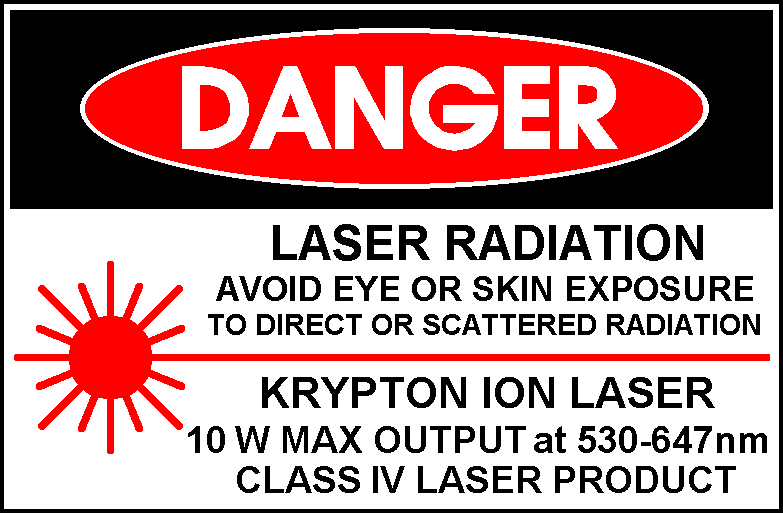Laser Printer Awareness Day!
As a lot of people know, meeting safety is taken very seriously. At ZARP, see meeting policy, section health and safety, article III,
Attendees should be aware of conditions such as Eyestrain, Repetitive Strain Injuries (RSI) and other irritation from environmental factors such as laser printers in close proximity to their working environment.
As such, ZARP is unique in that it's the only community in it's lane to handle, prepare, and appreciate the safety of it's staff members and users in the meetings. Unfortunately, common and repetitive exposure to laser printers in non-ergonomic work stations often leads to hazardous medical issues.
Although laser printer's have their cons, it's important to highlight unique fun facts about them to better inform you all.
• The world’s first laser printer that was designed for office use was developed by Xerox in 1981. The Xerox Star 8010 cost a whopping $17,000 at the time, $44,557.21 by today’s monetary standards.
• It is estimated that 3-4 liters of oil is being used every time a toner cartridge is produced, generating the market for remanufactured toner cartridges, made of recycled cartridges that have been inspected, cleaned, refilled, and tested to maintain the high quality printing.
• Laser printers are considered to be more accurate over inkjet printers. A color Laser Printer can print realistic-looking photos at 2400DPI.
• The World Record for fastest desktop printer is the HP Officejet Pro X Series, recognized by Guinness World Records at an astounding 70 pages per minute.
• During the printing stage, Laser Printers use 3x more energy than a Desktop Printer. However, an idle Desktop Printer will use 5x more energy than a Laser Printer.
• While printing, The fusers in a Laser Printer can reach up to 400 degrees Fahrenheit. This heat is what causes the toner to melt onto the paper.
• In 2012 alone, over 942 million inkjet cartridges were sold worldwide, containing enough ink to fill 4.5 Olympic sized swimming pools.
When it comes to your laser printer, it's important to read the manual with reccomendations on setting it up, cleaning it, and being safe with your equipment.
Introduction
You have decided to use an item of low-emission office equipment with a printing function (e.g.
printer, photocopier) tested to RAL-UZ 171 and marked with the Blue Angel environmental seal. For
the sake of occupational safety and health, you should observe the following instructions on set-up,
operation, cleaning and maintenance.
Set-Up
At workplaces, the equipment should be set up so that the air emitted from the fan vents is directed
away from the workplace.
Printers, and especially printers used by several people (group printers), should be set up in wellventilated
printer rooms. Rooms used by employees as rest rooms and in which food and drink are
prepared or consumed are not suitable as places for setting up office equipment with a printing function.
Operation
Most printers have a "draft mode" or "economy mode" setting that uses less toner. With this setting,
the print quality is usually slightly poorer. See if you can use this setting at least some of the time.
When a lot of pages are printed, you may smell vapours that are usually caused by the paper.
Recycled paper tends to emit more vapours than virgin-fibre paper. Low-emission recycled paper
suitable for printers – including pure white paper – is indicated by the Blue Angel environmental seal
combined with reference to testing to RAL-UZ 14 (see also
www.blauer-engel.de).
When filling the tray with paper, do not fan it, as this releases paper dust.
Only purchase toner cartridges when required, as prolonged storage usually causes the toner to
age. When purchasing cartridges, choose either original cartridges from the printer manufacturer or
products marked, for example, with the DGUV test seal "DGUV Test – schadstoffgeprüft"1 or with the
LGA seal "LGA-schadstoffgeprüft"1
.
When replacing toner cartridges, make sure that no toner spills out of the cartridge. If it does, wipe
the toner up with a damp cloth (subsequently dispose of cloth with residual domestic waste). Never
blow toner off surfaces. Should the skin or clothing be soiled, it is advisable to remove the toner with
cold water and soap. Warm water can cause the toner to become sticky, making it stick even more
firmly to skin and clothing.
After replacing the toner cartridge or when the print quality declines, printing a "cleaning sheet" may
be advisable. Instructions can usually be found in the printer manual.
Cleaning
When necessary, clean the outside of the equipment with a damp cloth.
Cleaning the interior of the equipment, e.g. in the event of poor print quality, should only be carried
out by service technicians.
Maintenance
Maintenance work should be carried out exclusively by service technicians. For maintenance of your
printer, contact your responsible IT department or the printer manufacturer's service hotline. In all
cases, refer to the operating instructions and follow the recommendations given in them.
Laser Printer Health Risks
Laser printers and copiers are suspected to emit toner dust and volatile organic compounds and thereby to represent a health hazard. ... In experimental animals, accumulation of toner particles in the lung following long-term inhalation exposure to high toner concentrations may cause chronic inflammation and lung fibrosis.
9/8/18 Meeting
I will be hosting a meeting sponsored by the Community Team at
7:00 PM BST. We will discuss what I've gone over here, pose scenario's, and of course a quiz like trivia game where the winner will receive a specially themed PRIZE!






























